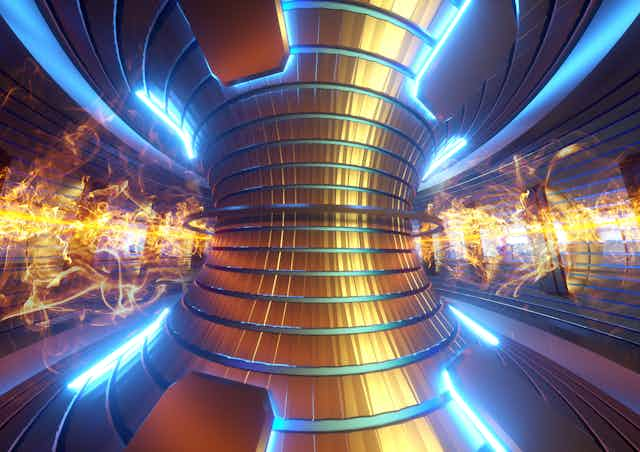The race is on to develop the world’s first nuclear fusion reactor
Thanks to the rapid uptake in ‘green’ ESG funds by the wholesale and retail investment community, growth in clean and renewable energy is starting to bend the emissions curve. Yes, progress is being made; but nowhere near the required rate to prevent global temperatures from rising past a safe limit of 1.5 degrees Celsius. Far more drastic action is needed according to some commentators.
Renewable energy sources such as solar, wind, geothermal and hydroelectric are great alternative green energy sources that can be used to help fill in the gap for the next couple of decades. Unfortunately, these energy sources, each have their limitations making them a short term solution only. They cannot be relied upon to solve our long-term power requirements. To add to the narrative solar and wind generation have a significant carbon footprint and create negative environmental impacts.
So what energy sources have left that tick all the boxes?
Many countries, including Australia, are going down the green hydrogen path which also has its own challenges with storage and transportation. This leaves all but one type of energy generation that will have none of these challenges if all goes as planned. By 2035, the US is determined to have all greenhouse emissions from electricity eliminated. One hell of an ambitious goal set by President Joe Biden. The aim is to replicate the energy source that powers the solar system, via a process called ‘nuclear fusion.’
The basic premise is that the fusion reactor will generate more energy than it consumes. It is a clean source of energy
The UK government has joined the race by announcing an investment of £200m to deliver electricity from a fusion reactor by 2040. China, Russia and India have also built similar fusion reactors. According to the BBC, “Fusion is the process that drives our Sun. Every single second, millions of tonnes of hydrogen atoms crash together in the tremendous temperatures and pressures of our parent star. This forces them to break their atomic bonds and fuse to make the heavier element, helium.” A major international cooperative effort called Iter was launched. The project involves 35 countries all working together to construct a huge test reactor in southern France. The plant has been hit with long delays and budget overruns, which has pushed its completion date to 2050.
Is it safe?
Yes, it is. One big advantage of fusion over fission is that there is no risk of a meltdown. The fusion reaction is very easy to stop, unlike a fission reaction. There is no radioactive waste, and the process is a lot more powerful than a fission reaction. It would produce five times as much energy as a fission reactor. Here are a few more benefits:
- Its fuel is practically limitless. Fusion uses hydrogen that is abundant in nature.
- Not much is needed – Just 5 kilograms of hydrogen would be needed to generate the equivalent of 16 million pounds of coal.
- It’s stable and reliable unlike wind and solar.
Fusing atoms together releases nearly four million times more energy than burning coal, oil or gas, and four times as much as nuclear fission reactions. The solution is fusion, but it’s a hard task to pull off. Building a facility that can generate 100 million degrees Celsius, six times hotter than the sun’s core, so that the fusion reaction can take place, is a major challenge.
So far, China became the first facility in the world to briefly reach this temperature. Others will soon follow. A decade ago, nuclear fusion was a distant dream, which is fast becoming reality.










